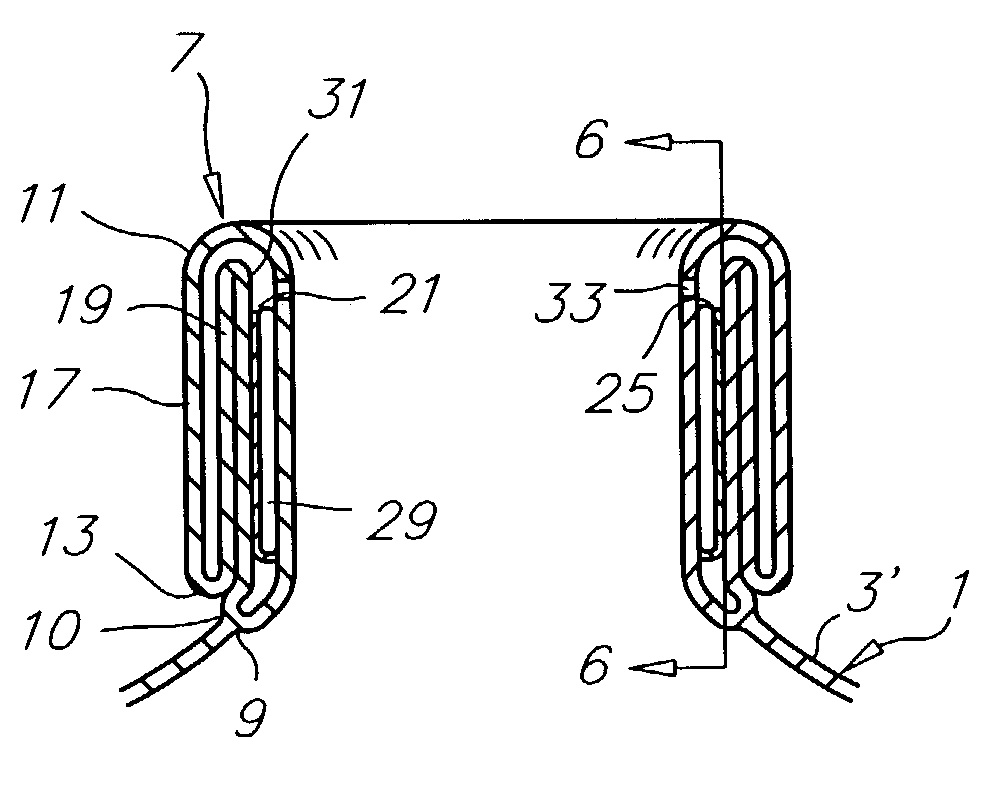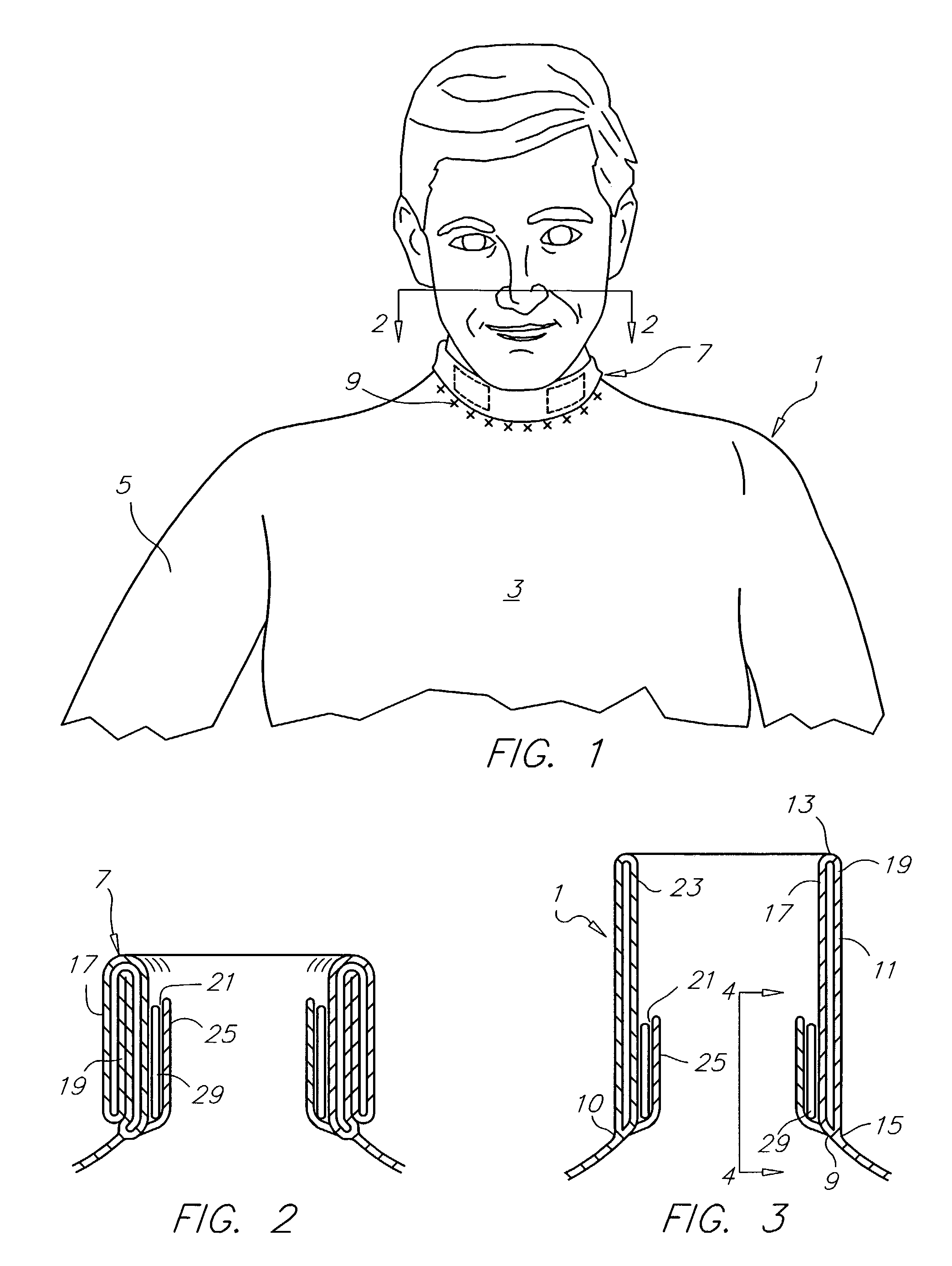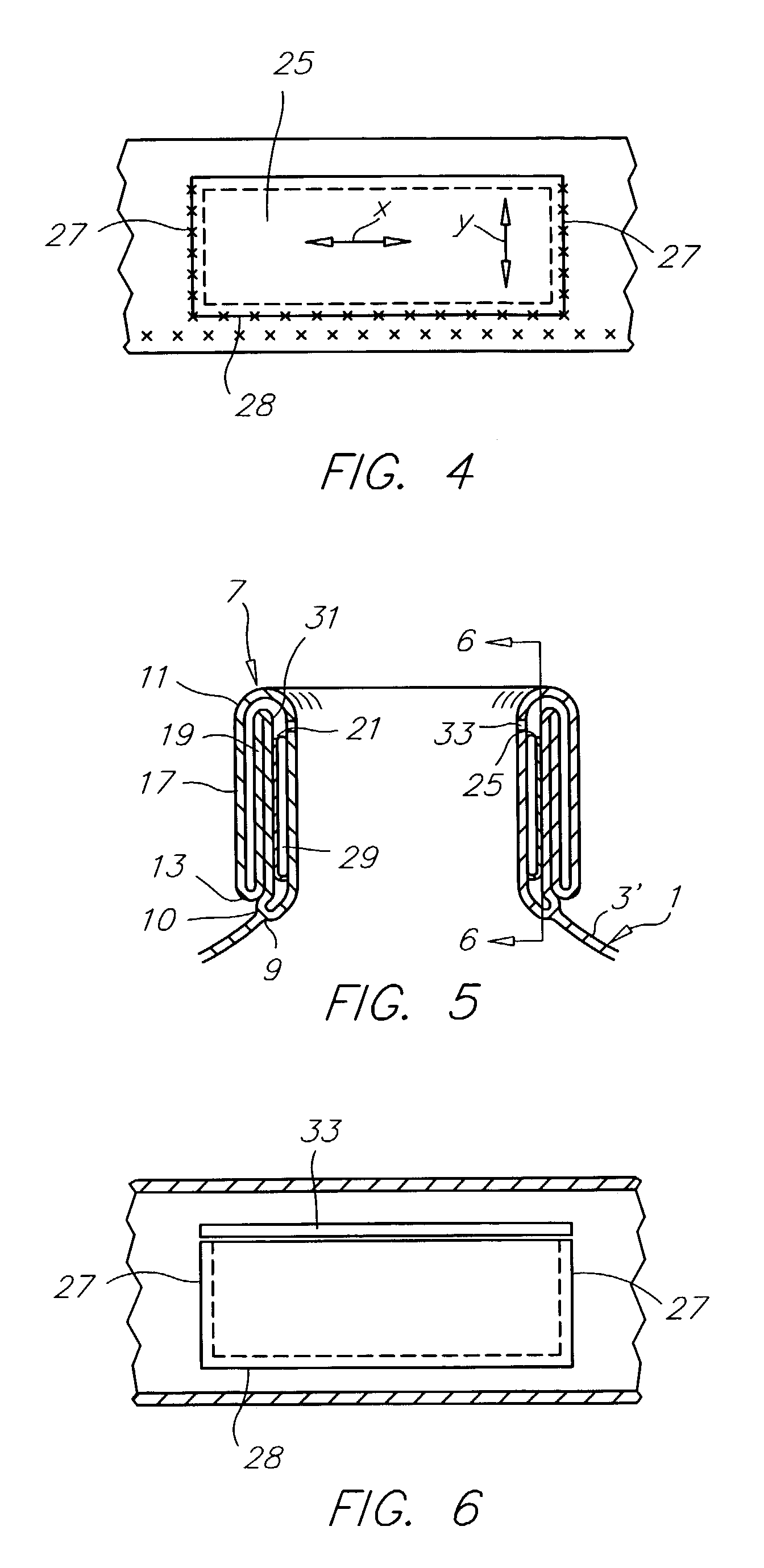Necked garment having built-in receptacle for air activated heater
a heater pocket and built-in technology, applied in the field of indoor garments, can solve the problems of large fraction of the heat generated in the heater pocket lost to ambient air, wearer sitting in the draft is susceptible to feeling cold, and the effect of efficient heat application
- Summary
- Abstract
- Description
- Claims
- Application Information
AI Technical Summary
Benefits of technology
Problems solved by technology
Method used
Image
Examples
Embodiment Construction
[0026]Although the disclosure hereof is detailed and exact to enable those skilled in the art to practice the invention, the physical embodiments herein disclosed merely exemplify the invention, which may be embodied in various other specific structures. Referring to FIGS. 1–4, a garment 1 embodying the invention is illustrated. The garment 1 illustrated represents garments generally known as turtleneck sweaters. The invention can as well be employed with other garments employing garment structure compatible with the principles taught herein.
[0027]Garment 1 has a circumferential portion 3 which generally encircles the torso, of the wearer downwardly to a position at least between the wearer's shoulders, preferably downwardly to or beyond the wearer's waist. Garment 1 also has conventional sleeves 5 or other openings, joined with the circumferential portion 3, for receiving the wearer's arms. A collar 7 is joined, as by sewing, adhesive, or other bonding, along a joint 9, to the circ...
PUM
 Login to View More
Login to View More Abstract
Description
Claims
Application Information
 Login to View More
Login to View More - R&D
- Intellectual Property
- Life Sciences
- Materials
- Tech Scout
- Unparalleled Data Quality
- Higher Quality Content
- 60% Fewer Hallucinations
Browse by: Latest US Patents, China's latest patents, Technical Efficacy Thesaurus, Application Domain, Technology Topic, Popular Technical Reports.
© 2025 PatSnap. All rights reserved.Legal|Privacy policy|Modern Slavery Act Transparency Statement|Sitemap|About US| Contact US: help@patsnap.com



